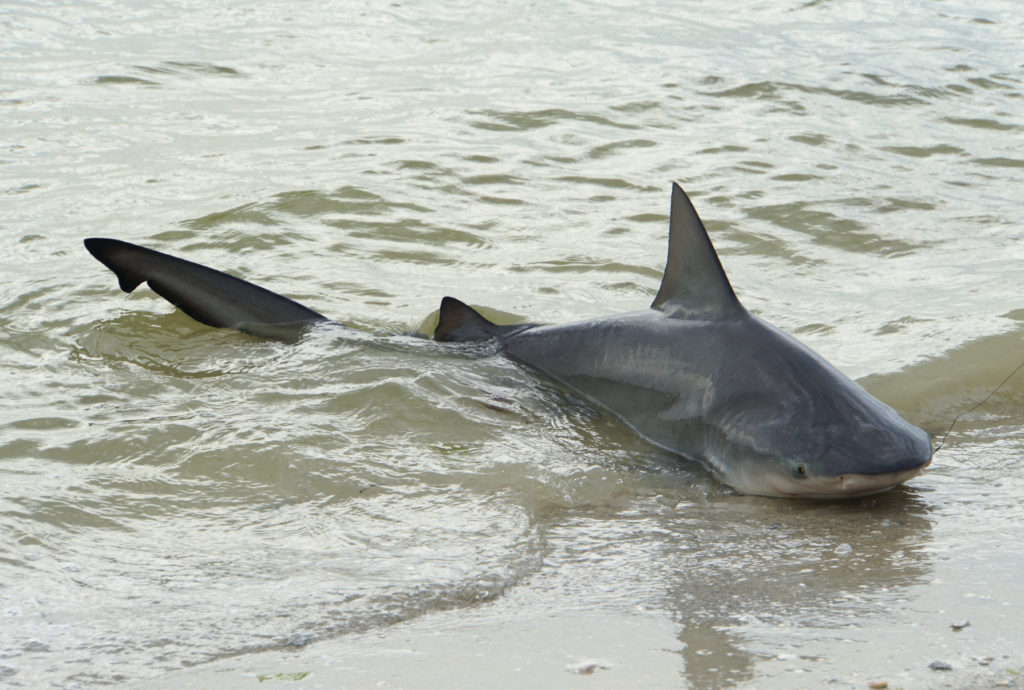By Amy Wold, LWF Policy Director
A slew of news articles and personal reports have highlighted frustration from the public and fishing communities that certain species of sharks are becoming a problem in Louisiana’s coastal waters.
Currently, the Louisiana Wildlife and Fisheries Commission passed a Notice of Intent of Intent to Expand Recreational and Commercial Shark Harvest for two common species of shark found in Louisiana waters – Blacktips and Bull sharks – that would remove size and bag limits for these two species.
The Louisiana Wildlife Federation (LWF) has no objection to the current proposal or shark fishing in general, but LWF comments do highlight the need for robust future monitoring of the two species for a number of reasons.
Currently, there is science-based evidence that the Blacktip shark populations are in good shape in the Gulf of Mexico based on several assessments done by the National Oceanic and Atmospheric Administration (NOAA). A similar assessment, the first time it has been done, for Bull sharks is expected to be released later this year. The assumption is that it will also show that Bull shark populations in the Gulf of Mexico are healthy.
However, in comments LWF submitted earlier this week, the support for the new regulations comes with a request for a robust monitoring of these two species into the future.
Concerns about depredation and increased human/shark interactions are partly responsible for the proposal to remove bag and size limits from these two species, but there are other reasons why this increased contact could be occurring.
For example, it is possible that increased interactions between people and Blacktip and Bull sharks could be related to a number of factors aside from population growth including warming waters making inshore areas attractive to Bull sharks for longer time periods than in the past (Warming waters lead to increased habitat suitability for juvenile bull sharks (Carcharhinus leucas) | Scientific Reports (nature.com))
In another study in 2023, researchers found that increases in depredation, “may be the result of several factors, including changes in fishing practices, learned behavior of sharks, reductions in natural prey, and environmental shifts; however, many anglers believe depredation is increasing because of increasing shark populations.” (Frontiers | Depredation influences anglers’ perceptions on coastal shark management and conservation in the United States Gulf of Mexico (frontiersin.org))
In addition, there are indications that warming gulf water temperatures could have an impact on sharks, remaining closer to shore, for longer periods of time into the future, which would increase the likelihood of human interactions.
It is great news, or will be great news, that these two species are doing well. However, it’s important to know if they continue to do well in the future or if they’re doing poorly and just congregating closer to where people fish because of a more comfortable home and a constant food (bait) supply.
Healthy and robust monitoring of these two species will be essential in determining whether populations remain healthy over time, or if we have set out shark feeders in an increasingly welcoming nearshore environment.
Read the full comments submitted by LWF here.
A copy of the Notice of Intent is here.
Written comments on the NOI will be accepted until Nov. 7, 2024, and can be sent to Jason Adriance, Department of Wildlife and Fisheries, P.O. Box 98000, Baton Rouge, La. 70898-9000 or by email to jadriance@wlf.la.gov.

